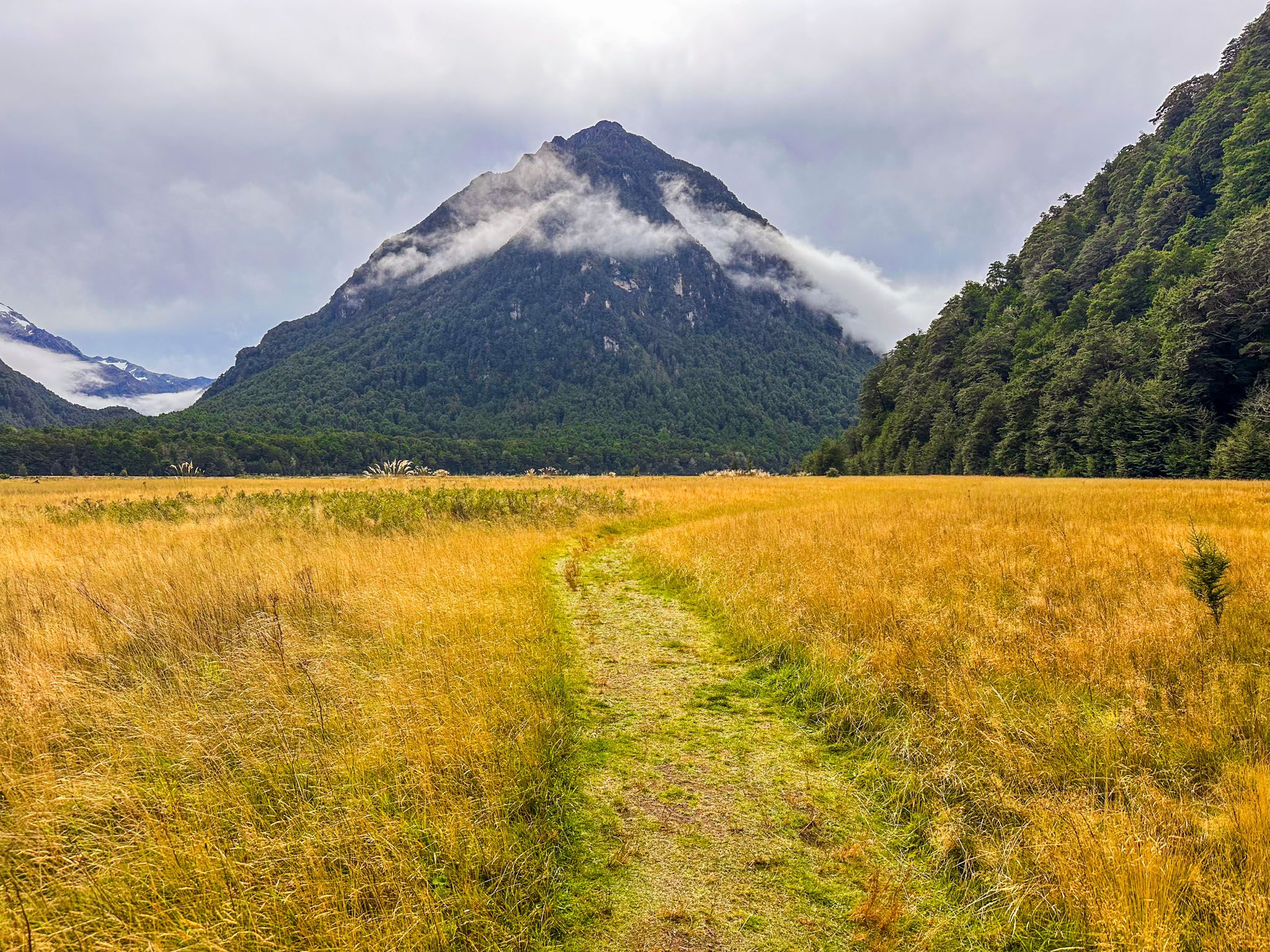The Dart River / Te Awa Whakatipu is fed by the Dart Glacier in the Snowdrift Range, west of Mount Aspiring. It runs for 60 km along the Dart Valley and terminates at the north end of Lake Wakatipu. Much of this beautiful valley is located within Mount Aspiring National Park, and it can be accessed via the Dart Track. You can also connect the Dart Track with the Rees Track to create a 5-day tramp that connects the Dart and Rees via the Rees Saddle.
A much easier option for a half-day trip is to drive from Glenorchy through Paradise to the end of Paradise Road and park in the national park. The road is the first adventure, with an often rough surface and several fords after Paradise. There is one vast, spectacular, gravelled slip area you cross, which is a reminder of how vulnerable the environment is to stormy weather. The road is doable in a 2WD, but take extra care. You can also explore the river and valley by jet boat from Glenorchy.
From the car park, walk down the Dart Track for as long as you want. The track starts off sidling along the 200-metre-high cliffs of Chinaman Bluff, dripping with water. and up to 60 metres above the river gravels. It then descends to enter the expansive golden grasslands of the valley, surrounded by spectacular mountains. The grasslands are a natural feature of these valleys, with winter frosts preventing shrubs and trees from taking hold. In some places, it's a short walk to the sprawling river gravels and one of the river braids. Otherwise, it's reminiscent of the better-known Eglinton Valley on the road to Milford Sound but without the busloads of tourists.
Māori called the river Te Awa Whakatipu. Te Awa means “the river”, but there is uncertainty around the historical meaning of Whakatipu, which is also connected to Lake Wakatipu and Whakatipu Kā Tuka (the Hollyford River). However, the simple meaning of whaka and tipu is “causing growth”, which feels meaningful as the river feeds the valley and the wider Wakatipu Basin. Early explorer and stationholder. William Gilbert Rees named the river the Dart in the 1860s, due to its swift flow. The nearby Rees River was also named for him.
In 1998, the official name of the river was combined from the European and Māori names to become Dart River / Te Awa Whakatipu. This was in addition to 90 other places in the South Island, as part of the settlement of Ngāi Tahu Treaty of Waitangi claims.











